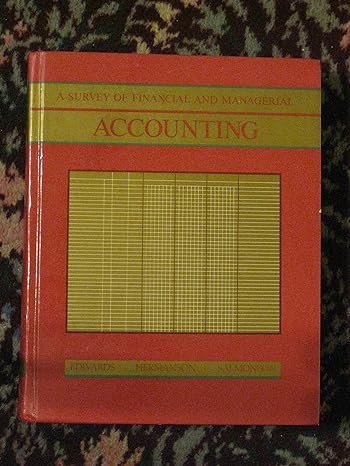Question
1. Genreally, adjusting entries do NOT consist of: A debit to an expense and a credit to an asset. A debit to an expense and
1. Genreally, adjusting entries do NOT consist of:
| A debit to an expense and a credit to an asset. | ||||||||||||||||||||||||||
| A debit to an expense and a credit to revenue. | ||||||||||||||||||||||||||
| A debit to an expense and a credit to a liability. | ||||||||||||||||||||||||||
| A debit to a liability and a credit to revenue.
2. The purpose of adjusting entries is to:
|
Step by Step Solution
There are 3 Steps involved in it
Step: 1

Get Instant Access to Expert-Tailored Solutions
See step-by-step solutions with expert insights and AI powered tools for academic success
Step: 2

Step: 3

Ace Your Homework with AI
Get the answers you need in no time with our AI-driven, step-by-step assistance
Get Started


